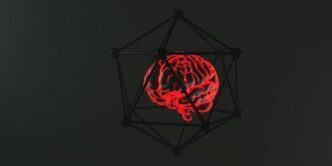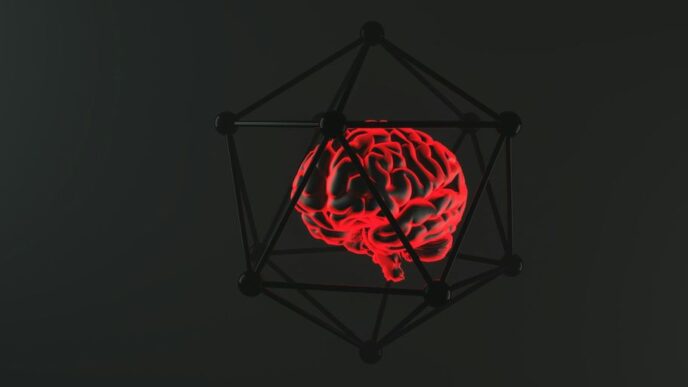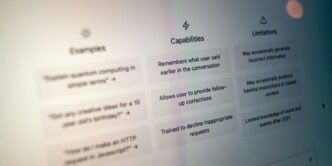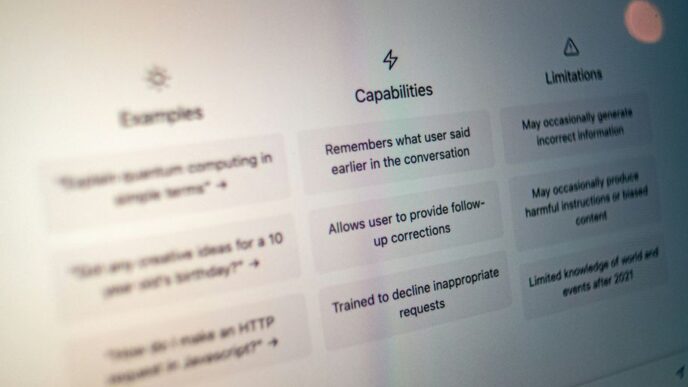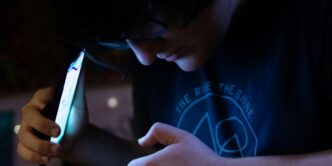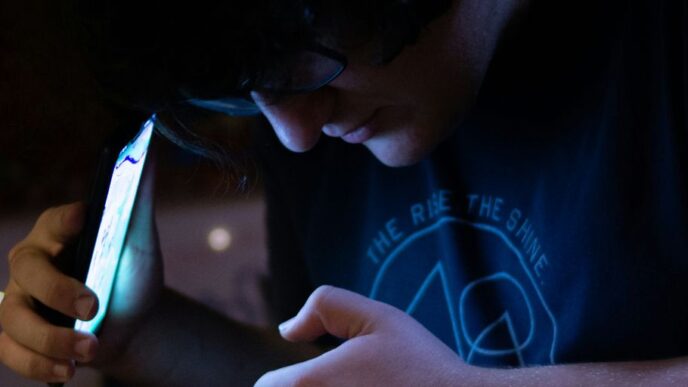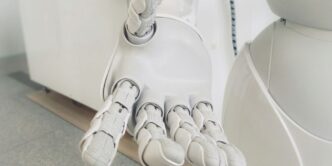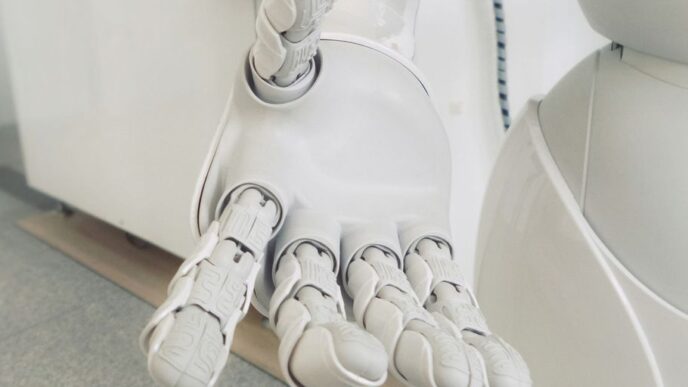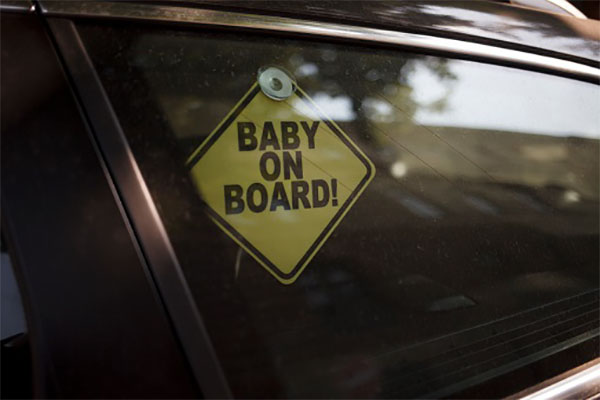
By Lance Eliot, the AI Trends Insider
You’ve undoubtedly seen the famous Baby On Board signs that were a crazed one-hit wonder during the mid-1980s.
When the fad first emerged, it seemed like these ubiquitous yellow-colored signs and their bumper sticker variants were popping up on cars everywhere. The moment that you pulled onto the street from your house, you’d likely see the Baby On Board prominently on the backs of cars streaming down your street, assuming you lived in an area that had young families that were eager to announce their baby occupant.
At first, it seemed that most people genuinely placed such a sign in the rear window of their cars as a means of letting other drivers know that there was a baby or small child inside the moving car.
The notion was to forewarn other drivers to be especially careful when driving near to the car, presumably wanting to make sure that other drivers were supposed to regard the car as “special” since it contained a baby.
I remember that some drivers that didn’t have children or had children that were far beyond the baby age were somewhat disturbed at the emergence of these signs.
Did the sign imply that other drivers were callous around other cars and that by posting a Baby On Board sign they should clean-up their act?
It was kind of a back-handed insult to these other drivers. One interpretation was that you, the person reading the sign, were a really crummy driver and that by announcing the presence of a baby, you were having a finger wagged at you to not be such a careless and witless driver.
There were some drivers that actually then became upset and decided to purposely drive recklessly near such a car, trying to show that other car who’s the boss. The appearance of the Baby On Board sign became a kind of beacon for those affronted drivers. This might seem nutty now, but whenever a widespread fad like that emerges, there are bound to be some that don’t like the fad and profess to make it backfire.
Rumors abounded that the sign was actually intended to alert emergency services or first responders whenever they came upon a car accident scene.
If there was a wreck of cars, presumably the bright yellow sign would stand out and the fire department responding would know to find a baby inside that particular car. Some assumed that there was apparently a high chance that your baby might get overlooked, and maybe you as an adult sized body would be dragged out of a decimated car, but your baby would get left behind.
The original developers and firm that brought the Baby On Board to worldwide attention had mainly in mind the idea of forewarning other drivers to be careful when near to a car with a baby in it. There is scant evidence to suggest that somehow babies weren’t being pulled out of car wrecks.
Nor was there evidence that once the signs became popular that somehow it raised the chances of a baby being discovered that was otherwise going to be overlooked in a demolished car.
For some people, the sign shifted in meaning toward a source of pride that they had a baby, regardless of whether the baby was actually in the car at the time or not.
In other words, many people bought the signs and put them on their cars, doing so as a showcase that hey, I’ve got a baby, and congrats that I have one. You might not have normally been telling the world that you had a baby per se, but this sign made it easy to make such an announcement.
Of course, having the sign on your car when you didn’t actually have your baby in the car was kind of defeating the purpose of the sign. If you were inclined to believe in the theory that the sign would give a crucial clue to first responders to look for a baby in a wrecked car, the sign was now at times going to endanger first responders by having them search in vain for a baby left behind. This would increase the risk for the first responders and quite adversely undermine the matter. It made things potentially worse rather than for the better.
This aspect of leaving the sign in your car window when you didn’t have a baby in the car was yet another source of aggravation for some other drivers.
Those drivers that were perturbed at the prevalence of cars using the sign and yet didn’t have a baby in the car were at times tempted to look inside your car as you drove past. If they did not see evidence that a baby was in your car, these irked drivers would sometimes honk their horn at the car or try to perform untoward maneuvers nearby the offending car and its offending driver in a kind of retaliation. Take down your sign, some of them would exclaim in anger.
Another viewpoint about the baby in the car warnings was that it maybe was good for the driver of that car that had the baby, causing that driver to be more cautious in their driving.
Allow me to explain.
Suppose the driver of a car that had a baby in it was in front of you and suddenly cut you off in traffic. Well, that’s a move that endangers the baby in that car. Some hoped that the people putting the sign onto their car would become more thoughtful drivers as a result of their own realization that they had a baby in their car. In that manner, the sign is really for the driver of the car that has the baby in it, more so than to alert other drivers about the car with the baby in it.
Eventually the Baby On Board signs became a kind of meme, akin to the nature that we have today on social media whenever something catches the fancy of the public at large. Parodies sprung up and it became popular to put a faked version on your own car window. For example, there was the Baby Driving version, the Mother In-Law In Trunk version, and the Baby Carries No Cash version, and so on. Millions of the bona fide versions were sold and some estimates say that many millions more of the parody versions were sold.
Downsides Of Baby-On-Board Signs
Use of the sign on your car was considered questionable in other ways.
For example, some states in the United States got worried that the signs would use up space on your car window and obstruct your view.
It was even outlawed with a ticketed violation in some jurisdictions, prohibiting you from putting one on your car window. Another concern was that the signs were distracting drivers and causing them to focus on reading the sign rather than watching the road and traffic conditions. Since the sign didn’t seem to have much of a greater useful purpose per se, the distraction factor made it overly dangerous in comparison to whatever benefit it might provide.
There are various urban myths and other fascinating tales during the heyday of the Baby On Board signs.
One popular tale was that drug smugglers would at times use the sign, in hopes of fooling the police into assuming that a car that had drugs would most certainly not have drugs, because of course no one would put illegal drugs into a car that had a cute innocent baby in it.
Partially due to the confusion about the sign and the backlash, the fad eventually waned.
Nonetheless, the sign and the saying became an enduring icon. You would be hard-pressed to find anyone that did not know about the Baby On Board signs in the sense that they’ve seen one either in real-life or seen it online someplace. The younger generation that did not grow-up with the signs have often heard about the signs or seen the signs and slogan portrayed in a variety of TV shows, movies, online games, and in a wide variety of other ways.
There are offshoots of the Baby On Board usage, such as wearing such a sign as woven into an apparel item worn by a pregnant woman. Some view this as a clever way to say a baby is on its way. There is a nostalgic side of the market too. You can still get the signs and put them onto your car, which you’ll see from time-to-time on the roads. As usual, not everyone is keen on the use of the sign. There are some that say you are opening yourself to notifying prospective kidnappers or other hoodlums that might be interested in grabbing your baby, or that they can use the sign to strike up a conversation with you, acting as though they know you, and try to scam you in some other manner.
It’s a cruel world out there.
Baby On-Board Aspects
Let’s for the moment consider what it means to truly have a baby on-board of your car.
Putting aside the matter of the famous sign, what kinds of things should people be doing if they actually are carrying a baby in their car. This might be especially instructive for those of you that have yet to drive a car with a baby in it.
Perhaps the most attention and discussions about having a baby inside a car involves the use of a baby seat for the child.
Going all the way back to the 1920s, the early versions of baby car seats were essentially sawed-off high-chairs that had straps and some other restraints on them. The focus was to simply keep the baby from being able to move around in the car. There wasn’t much thought given to the safety of the baby and nor what might happen to the baby when the car got into an accident or performed some radical driving maneuver.
Until the late 1960s, most baby seats were about the same in terms of lack of careful consideration for what a baby seat should do. The auto makers began to provide so-called love seats and guard seats for housing a baby inside a car during the latter part of the 1960s, and then during the 1970s the United States began regulating the safety aspects of baby seats.
At one point, there was almost a baby seats “war” in which different baby seat makers vied to get parents to buy their particular brand and models of baby seats. Do you have love in your heart for your baby? Would you give anything to protect your baby? If so, it seemed that the baby seat makers would shame you into buying the most expensive baby seat they could make. The more the baby seat looked like an astronaut’s seat, it was assumed by many parents that they were doing the right thing by buying such an elaborate contraption.
During this time period, there was research undertaken that indicated having the baby ride in the backseat is much safer than having the baby ride in the front seat. This seems rather intuitive in that you figure that any accident is likely to smash or cause flying debris to appear in the front seat, and so by placing the baby in the back seat you are essentially cocooning them further away from the mayhem.
There was also research that indicated the baby should be placed in a rear-seat facing manner. Thus, not only should the baby be in the back seat, the baby should also be facing toward the back of the car. You can imagine that some parents were dubious about this approach. How could they watch their baby and make sure the baby was okay during a driving journey? Which was more important, having the baby in the presumed proper position for a car crash, which might happen once in a blue moon, or have the baby facing forward such that via glancing back or looking in the rear view mirror the parents could instantly see the status of the baby.
Another factor became how to affix the baby seat into the car.
Sadly, many of the souped-up baby seats were difficult to install into the actual seat of a car, and thus some parents discovered to their dismay that though they spent a fortune on the baby seat, it did little good during a crash because the baby seat itself was not well affixed in the car. This led to a massive campaign to try and explain to parents how to install their baby seats.
To this day, it remains a potential difficulty and concern.
The baby seat makers were able to realize that parents wanted not only a car baby seat but also wanted other kinds of seating for their baby. You might have a stroller that your baby sits in and have a separate car baby seat. If you went for a trip on a plane, you’d need to take your baby stroller and your separate baby seat too. Knowing how to use both of those completely incompatible contraptions and their idiosyncrasies made it more arduous to use them. This led to the all-in-one approach of devising baby seats that worked for cars and for strollers and for other purposes too.
Though the car-related baby seat topic tends to dominate attention about having a baby in a car, I’d like to cover various other elements involved in having a baby in a car as well.
One aspect that I alluded to already involves the desire to keep tabs on the baby. An adult in the car should presumably be making sure that the baby is doing okay. This would usually involve trying to watch the baby and see how the baby is doing. You might also be listening to determine whether the baby is happy or maybe crying. The baby might also wiggle around and be flailing, the movement of which might make noise or might catch your visual attention out of the corner of your eye.
If you are driving a car and it is just you and the baby in the car, this desire to drive well and pay attention to the baby can be challenging.
It would be one thing too if the baby was seated adjacent to you in the front of the car, but the baby being in the backseat makes it even more arduous to keep tabs on the baby. I’ve seen many adults transfixed on their rear-view mirror, trying to watch their baby, and angling the rear-view mirror downward rather than keeping it in position to see the cars behind them.
Sometimes the driver will repeatedly glance over their shoulder, turning their head away from the traffic ahead. This is another dangerous gambit, similar to trying to use the rear-view mirror to watch your baby. For each moment that you think you are doing the right thing by looking at your baby, you are likely increasing the chances of getting into a car accident. It’s a tough balance. Do you not try to keep tabs on your baby and risk the baby somehow having troubles and you don’t realize it, but in doing so you are maybe putting the baby into greater danger due to driver distraction?
Remember earlier about the Baby On Board signs and that some believed it was really supposed to be for purposes of getting the driver with the baby on-board to be safer? Part of the belief was based on the idea that drivers with a baby in their car are going to axiomatically be distracted and therefore be a worse driver. In fact, some of the other drivers that were irked at the drivers with babies in their cars was that those such drivers tend to often make late lane changes or do other acts that suggested they were distracted and only periodically watching the road.
Which is more important, your catching the drool coming from your babies’ mouth, or making a proper lane change when going at 65 miles per hour freeway speeds? Trying to be a one-person band when driving a car is often quite arduous when you have a baby in the car. There you are, worrying about the baby, worrying about the traffic, and who knows what else might be on your mind. It’s a lot to deal with as a driver.
If you have another adult in the car with you, hopefully the other adult will assume the duties of keeping tabs on the baby. That’s the theory, though of course it can sometimes merely splinter the attention of the driver even further. The driver might be watching the other adult to make sure the adult is properly keeping tabs on the baby, and meanwhile the driver is trying to still on their own keep tabs on the baby. You’ve now got the driver contending with two living creatures at the same time. It’s not always the case that this will lessen the distractions of the driver, but at least it provides the possibility.
Nuances Of Babies On-Board
Now that I’ve covered the aspects about the baby seat and the difficulties of keeping tabs on your baby while you are driving a car, let’s consider some other elements too.
Suppose you put the baby into your proper baby seat and the baby seat is correctly secured in your car.
Good so far.
You opt to go on a leisurely drive along the coastline. It’s a gorgeous sunny day. You drive along the coast highway and admire the ocean and the sunshine. Unfortunately, you failed to consider the sun exposure that the baby is getting in the backseat of the car. The baby is likely not able to realize the dangers of sun exposure and nor alert you to the aspect they are getting sunburned (as you know, adults get sunburned all the time, not realizing it is happening until long after it occurs).
This brings up the importance of making use of sunscreens, either physical ones on the car windows or attached to the baby seat, or some kind of protection for the baby from the sun rays. That’s another element to be considered when you have a baby in your car.
I’ll mention some additional and quite serious and disconcerting dangers (brace yourself or skip ahead to the next section).
Suppose you put the baby into the baby seat and have put the baby seat next to the rear window. A baby might be able to open the window and endanger themselves. Maybe even open the car door. This is the reason that many cars now have childproof locks on the rear windows and doors. This is yet another element to keep in mind about having a baby in the car.
Lots of other dangers are possible.
You might accidentally close a window on a baby’s appendage, or likewise close a door on them.
You might leave the baby in the car and the baby could get injured or die from heat stroke.
While driving the car, if you take a turn or curve in a harsh manner, it could toss the baby around, in spite of the baby seat protection. The baby’s limbs might not be conducive to sudden braking or sudden accelerations. There are some doting parents that perhaps become overly protective as drivers and they go exceedingly slow and take turns agonizingly sluggishly, which though you could say is the right kind of spirit, can actually increase the chances of getting into a car accident. Becoming a hazard on the roadway due to overly cautious driving can be a downfall for a loving parent.
The last point on this topic for now is that there is still that question about what happens to the baby when an emergency occurs.
As mentioned earlier, the Baby On Board sign was not especially adopted to deal with making sure that first responders would know to save a baby in a wrecked car. From a slightly different viewpoint, there is the matter of how a parent can best extricate their baby from a car if there is an emergency. Do you try to remove the baby from the car seat and then remove the baby from the car? Or, would it be more prudent to remove the entire baby seat with the baby in it? You might have only split seconds to decide what to do and therefore should have considered beforehand what you will do.
AI Autonomous Cars And Baby On-Board
What does this have to do with AI self-driving driverless autonomous cars?
At the Cybernetic AI Self-Driving Car Institute, we are developing AI software for self-driving cars. One important “edge” problem involves having the AI be of assistance when you have a baby inside the self-driving car.
Allow me to elaborate.
I’d like to first clarify and introduce the notion that there are varying levels of AI self-driving cars. The topmost level is considered Level 5. A Level 5 self-driving car is one that is being driven by the AI and there is no human driver involved. For the design of Level 5 self-driving cars, the automakers are even removing the gas pedal, brake pedal, and steering wheel, since those are contraptions used by human drivers. The Level 5 self-driving car is not being driven by a human and nor is there an expectation that a human driver will be present in the self-driving car. It’s all on the shoulders of the AI to drive the car.
For self-driving cars less than a Level 5 or Level 4, there must be a human driver present in the car. The human driver is currently considered the responsible party for the acts of the car. The AI and the human driver are co-sharing the driving task. In spite of this co-sharing, the human is supposed to remain fully immersed into the driving task and be ready at all times to perform the driving task. I’ve repeatedly warned about the dangers of this co-sharing arrangement and predicted it will produce many untoward results.
For my overall framework about AI self-driving cars, see my article: https://aitrends.com/selfdrivingcars/framework-ai-self-driving-driverless-cars-big-picture/
For the levels of self-driving cars, see my article: https://aitrends.com/selfdrivingcars/richter-scale-levels-self-driving-cars/
For why AI Level 5 self-driving cars are like a moonshot, see my article: https://aitrends.com/selfdrivingcars/self-driving-car-mother-ai-projects-moonshot/
For the dangers of co-sharing the driving task, see my article: https://aitrends.com/selfdrivingcars/human-back-up-drivers-for-ai-self-driving-cars/
Let’s focus herein on the true Level 5 self-driving car. Much of the comments apply to the less than Level 5 self-driving cars too, but the fully autonomous AI self-driving car will receive the most attention in this discussion.
Here’s the usual steps involved in the AI driving task:
- Sensor data collection and interpretation
- Sensor fusion
- Virtual world model updating
- AI action planning
- Car controls command issuance
Another key aspect of AI self-driving cars is that they will be driving on our roadways in the midst of human driven cars too. There are some pundits of AI self-driving cars that continually refer to a utopian world in which there are only AI self-driving cars on the public roads. Currently there are about 250+ million conventional cars in the United States alone, and those cars are not going to magically disappear or become true Level 5 AI self-driving cars overnight.
Indeed, the use of human driven cars will last for many years, likely many decades, and the advent of AI self-driving cars will occur while there are still human driven cars on the roads. This is a crucial point since this means that the AI of self-driving cars needs to be able to contend with not just other AI self-driving cars, but also contend with human driven cars. It is easy to envision a simplistic and rather unrealistic world in which all AI self-driving cars are politely interacting with each other and being civil about roadway interactions. That’s not what is going to be happening for the foreseeable future. AI self-driving cars and human driven cars will need to be able to cope with each other.
For my article about the grand convergence that has led us to this moment in time, see: https://aitrends.com/selfdrivingcars/grand-convergence-explains-rise-self-driving-cars/
See my article about the ethical dilemmas facing AI self-driving cars: https://aitrends.com/selfdrivingcars/ethically-ambiguous-self-driving-cars/
For potential regulations about AI self-driving cars, see my article: https://aitrends.com/selfdrivingcars/assessing-federal-regulations-self-driving-cars-house-bill-passed/
For my predictions about AI self-driving cars for the 2020s, 2030s, and 2040s, see my article: https://aitrends.com/selfdrivingcars/gen-z-and-the-fate-of-ai-self-driving-cars/
Returning to the topic of having a Baby On Board, let’s consider how the AI can be of assistance if you do indeed have a baby inside a self-driving car.
For an AI self-driving car that is less than a true Level 5 or Level 4, there should be a human driver in the car, and in that case the AI could potentially assist the driver in ways other than driving the car per se, such as monitoring the baby and relaying status of the baby to the human driver.
The AI could use the interior-facing cameras of the self-driving car to do facial recognition about the baby.
Does the baby look okay, or is the baby turning blue because of swallowing something that might be blocking their airway passage?
The emotional state of the baby can be potentially interpreted via the facial expressions and movement of the baby while in the baby seat. The self-driving car also will have an audio microphone inside the car that can be used to listen for sounds, including the baby crying or the baby cooing.
It is likely that the baby seat will have its own Internet of Things (IoT) devices such as detecting the heart rate of the baby and other vital signs, of which this data can be conveyed to the AI of the self-driving car. There is also a likelihood that the AI can ascertain whether the baby seat is properly secured within the self-driving car. This would be based on sensors within the seats of the self-driving car and also in combination with the camera images showing whether the baby seat is slipping around or staying in place.
The human driver would presumably be able to focus on the driving tasks expected of the human and would feel reassured that the AI is monitoring the status of their baby inside the car. The AI would be able to provide a verbal indication to the human driver about the status of the infant. This could be an interactive dialogue based on the Natural Language Processing (NLP) capabilities of the AI system that are incorporated to engage the human in discussions about the driving task.
Beyond the simpler status aspects, the AI if specially developed with capabilities for assisting in baby monitoring would be able to detect some of the more potentially dangerous aspects that can befall the baby.
For example, if the baby is seated close to a car window, the AI via the visual image processing could detect if the baby tries to go outside of the window or tries to get the car door open. The AI could detect when the human driver opts to leave the car and hopefully therefore ascertain if the baby is being left behind in the car, reducing the chances of hot car deaths when an infant is inadvertently not removed from a car when needed. The AI might be able to detect sun exposure that the baby is getting and warn the human driver or possibly adjust the windows automatically to block the sun’s rays. And so on.
For more about the Internet of Things (IoT) see my article: https://www.aitrends.com/selfdrivingcars/internet-of-things-iot-and-ai-self-driving-cars/
For the use of NLP, see my article: https://www.aitrends.com/selfdrivingcars/car-voice-commands-nlp-self-driving-cars/
For the use of AI self-driving cars for family trips, see my article: https://www.aitrends.com/selfdrivingcars/family-road-trip-and-ai-self-driving-cars/
For the non-stop use of AI self-driving cars, see my article: https://www.aitrends.com/selfdrivingcars/non-stop-ai-self-driving-cars-truths-and-consequences/
For car crashes and the AI systems, see my article: https://www.aitrends.com/selfdrivingcars/accidents-contagion-and-ai-self-driving-cars/
Added Aspects Of AI Aiding The Baby-On-Board
When an AI self-driving car gets involved in a car crash or other disabling action, if the AI system is still functioning it could act as a kind of Baby On Board alert capability. This could involve the AI system getting the car to perhaps honk its horn as a sign that there is a baby in the self-driving car (though this is obviously a dubious means and could be misunderstood). The self-driving car might have external e-billboards that the AI could use to display a message for first responders that indicates a baby is inside the car (assuming the e-billboards are still functioning).
The AI could use V2V (vehicle-to-vehicle) electronic communication to potentially send out a message indicating that a baby is inside the car, which might then get picked-up by responding vehicles and relayed to first responders. Likewise, the AI might use V2I (vehicle-to-infrastructure) electronic communications to inform a nearby element of roadway infrastructure and of which the first responders might also be in contact with the roadway edge computing devices.
Though I’ve emphasized these various communication means to inform others about a baby inside the car, I’d like to also mention that this same kind of messaging could be used to indicate more aspects beyond the notion of a baby being on-board the car. The AI could indicate how many occupants there are in the self-driving car. The AI might be able to ascertain the general medical status of the occupants, such as whether they are still breathing or not and how injured they are. The AI could provide the status of the car itself such as whether it is still running or if it is crumpled up.
All such information would be handy for emergency responders as they seek to get to the scene of the car accident.
For more about edge computing, see my article: https://www.aitrends.com/selfdrivingcars/edge-computing-ai-self-driving-cars/
For safety aspects, see my article: https://www.aitrends.com/selfdrivingcars/safety-and-ai-self-driving-cars-world-safety-summit-on-autonomous-tech/
For my article about the dangers of getting out of a moving car, see: https://www.aitrends.com/selfdrivingcars/shiggy-challenge-and-dangers-of-an-in-motion-ai-self-driving-car/
For the analysis of self-driving car post-mortems, see my article: https://www.aitrends.com/selfdrivingcars/pre-mortem-analysis-for-ai-self-driving-cars/
So far, I’ve focused on the AI acting as a kind of assistant to the human driver that is present in the self-driving car and trying to be a nanny to watch over the baby.
Would this help ensure that the human driver remains more attentive to the driving task?
In other words, if the human driver knows that the baby is being closely monitored and the AI is informing the driver about the status of the baby, perhaps the driver would no longer feel compelled to turn their head to look at the baby seated in the back seat or try to watch the baby via a rear-view mirror.
You could counter-argue that the AI attention might spur the human driver toward being less attentive to the driving task. For some drivers, perhaps they might normally glance at the baby on a periodic basis when unaided by the AI. If the AI is continually giving status updates, it could spark the human driver to become more aware of the baby and therefore divert their attention toward the baby more so. Of course, that’s the opposite of what the AI monitoring is supposed to be achieving. A well devised AI monitoring system would presumably inspire confidence in the driver that the baby is being monitored sufficiently.
There is also the factor that the human driver is also likely being monitored by the AI. Whenever the human driver turns their head, the internal-facing camera would be able to detect this head turning. The AI would be able to gently caution the driver about diverting their focus away from the driving task. In that sense, even if the human driver is somewhat inadvertently sparked to look at the baby, the AI can help the human driver to realize this is occurring.
Babies And Other Passengers
One question that is a bit thorny involves what to do if the AI detects that something untoward is happening with the baby, whether real or imagined.
I remember when my children were babies and at one point, I had one of them in their baby seat in the backseat, and a passenger in the car turned to look and suddenly exclaimed “Oh my gosh!” as though something horrible had just happened.
This greatly startled me, and I assumed that somehow my offspring had gotten injured or was choking or something really bad was taking place.
Instead, it was simply that a toy had been ripped apart and the fluffy pieces were all floating around the backseat of the car.
The passenger had reacted a bit over-the-top to this.
There was no immediate danger involved. I didn’t know that status at the instant of the exclamation and so I reacted rapidly by immediately pulling over to the side of the road. This was a dramatic car maneuver and not one that I would normally have made. After realizing that this was not a true emergency, I cautioned the passenger that in the future they ought to be more careful as to how they react to such circumstances and be thoughtful of the impact it could have on the car driver.
How should the AI convey a potential urgency to the human driver if the AI detects something is amiss about the baby?
I doubt that we want the AI to make any loud exclamations or otherwise startle the human driver. The AI would need to balance between informing the human driver and not otherwise causing the human driver to make any sudden and untoward reactive actions.
Let’s next consider what the AI can do about a baby being inside a self-driving car when the self-driving car is at a true Level 5.
Since the true Level 5 self-driving car does not need a human driver, this implies one of several possibilities about the baby being inside the self-driving car.
First, it could be that there is an adult in the self-driving car and essentially an occupant with the baby.
In that case, the adult would hopefully be monitoring the baby. The AI could still be monitoring the baby, perhaps as a double-check or as further assistance to the adult. If the adult is perhaps weak in their faculties, maybe an elderly grandparent that is not so able to tend to the baby, the AI might serve as an adjunct to the adult.
Second, it could be that there is not an adult in the self-driving car and only a minor that accompanies the baby.
This is an easy scenario to imagine. Suppose you decide to have your AI self-driving car drop-off your two children at grandma’s house. You are too busy to go along. You put your 6-year-old daughter and your baby boy into the self-driving car, and you command the AI to take them to grandma’s.
You are making an assumption that your 6-year-old daughter can take care of the baby during the driving journey. Though you might believe that to be the case, in most states you are likely violating a provision about making sure that an adult is accompanying your baby. A minor is not considered the equivalent of having an adult present.
I’m sure that people will be tempted to assume that with the AI monitoring the baby and their daughter, and with the likelihood too of the remote parent being able to electronically communicate with the AI self-driving car, such as watching the camera feeds, this will be sufficient to then allow their unaccompanied children to be driving around in the AI self-driving car. Parents that are pressed for time will consider this handy as a means of transporting their children for them.
I’d say that we are heading toward a societal, ethical, and regulatory matter that will require discussion and debate.
Right now, if you do ridesharing for your children, they nonetheless still have an adult in the car, namely the ridesharing driver. There is in theory no means for you to currently put your underage children into a car and have that car go anyplace without at least one adult present, namely the human driver.
For my article about the rise of ridesharing and AI self-driving cars, see: https://www.aitrends.com/selfdrivingcars/ridesharing-services-and-ai-self-driving-cars-notably-uber-in-or-uber-out/
For my article about ethical review boards, see: https://www.aitrends.com/selfdrivingcars/ethics-review-boards-and-ai-self-driving-cars/
For my article about Gen Z and AI self-driving cars, see: https://www.aitrends.com/selfdrivingcars/gen-z-and-the-fate-of-ai-self-driving-cars/
For regulations about AI self-driving cars, see my article: https://www.aitrends.com/selfdrivingcars/assessing-federal-regulations-self-driving-cars-house-bill-passed/
Babies On-Board And No Other Humans On-Board
We can make the scenario of having underage occupants even more extreme.
Suppose you put your baby into the baby seat of the AI self-driving car and then command the AI to take your baby over to the house of a babysitter that you use.
During the driving journey, the baby is unaccompanied.
There is no other human inside the self-driving car.
Should we be comfortable with the idea that if the AI is monitoring the baby and suppose that the parent has remote access, we are okay with the baby being in the car by itself?
It seems hard to imagine that we would as a society accept this idea. If the baby suddenly has a severe problem, there is no immediate recovery possible since there is not another human inside the self-driving car.
You might try to claim that the AI self-driving car could try to seek help if the baby is having troubles. Maybe the AI dials 911. Maybe the AI sends out an emergency beacon via V2V and seeks assistance from other nearby cars and their potential human adult occupants. Perhaps the AI drives the self-driving car to the nearest hospital. Yes, these are all possibilities, but they seem rather second-best, at best, in terms of caring for the baby.
We’ll have to wait and see what we opt to do as a society.
Let’s pretend that the practice of having your baby in a true Level 5 AI self-driving car and alone as a human occupant gets outlawed.
We all know that practices that are outlawed are not necessarily ergo no longer undertaken. A parent might opt to normally not put the baby in the AI self-driving car by itself, but perhaps they decide to break the rule, just this once, and do so because they are pressed to do something else and believe they have a good reason to violate this law.
What then?
Well, we could guess that the AI would likely be able to ascertain that the baby is alone in the AI self-driving car. If that’s the case, should the AI then refuse to proceed? Perhaps we have the auto makers and tech firms place a special stop-mode that the AI won’t allow the self-driving car to get underway if there is a baby and no accompanying other human (this has its own challenges too, such as whether the other human is a minor versus an adult, etc.).
Or, suppose the AI self-driving car gets underway, somehow then realizes there is an unaccompanied baby in the car, should it report this aspect to the authorities? Perhaps it calls the police. The AI could drive the self-driving car to the nearest police station or rendezvous with a police car. I realize this seems far-fetched and hard to contemplate, but these scenarios are bound to happen.
If we eventually have hundreds of millions of AI self-driving cars on our roadways, all kinds of things are going to occur in terms of how people decide to make use of an AI self-driving car.
Suppose too that you are a ridesharing firm and you are letting people use your Level 5 or Level 4 AI self-driving cars.
A rider puts a baby into your ridesharing car, tells the AI to go to some destination, and slips out of the self-driving car. During the driving journey, something happens to the baby and it gets injured. Who is responsible for this? Since you provided the ridesharing car, presumably you have some culpability in whatever happens to the unaccompanied baby.
I’ve predicted that we might see a new kind of job role in society, namely the role of being a kind of AI self-driving car “nanny” or caregiver. The person would be hired to ride in an AI self-driving car and be there to accompany minors. They might also be there to aid someone that is elderly and not of full faculties. They might be there to assist in riders getting into and out of the AI self-driving car. Note that the person does not need to know how to drive a car (because the AI is doing the driving), which would reduce the barrier to entry for these kinds of positions. Etc.
For a new job consisting of being a kind of self-driving car nanny, see my article: https://www.aitrends.com/selfdrivingcars/future-jobs-and-ai-self-driving-cars/
For more about responsibility and AI self-driving cars, see my article: https://www.aitrends.com/selfdrivingcars/responsibility-and-ai-self-driving-cars/
For socio-behavioral aspects, see my article: https://www.aitrends.com/features/socio-behavioral-computing-for-ai-self-driving-cars/
For the boundaries of AI self-driving cars, see my article: https://www.aitrends.com/ai-insider/ai-boundaries-and-self-driving-cars-the-driving-controls-debate/
For the robojacking aspects, see my article: https://www.aitrends.com/features/robojacking-self-driving-cars-prevention-better-ai/
AI Driving Efforts And Baby-On-Board
As a final thought for now, let’s assume that there is a baby inside an AI self-driving car, and the baby might or might not be accompanied by another human (as I say, this is yet to be decided by society).
Should the AI self-driving car drive any differently?
Some would assert that the AI should drive the self-driving car in a fully legal and cautious manner, regardless of who or what might be inside the AI self-driving car. I think this is a bit of an over-simplification of the matter. There are degrees of driving that can range from being overly cautious to overly carefree. It is conceivable that the AI can devise a smoother ride for situations such as having a baby inside the AI self-driving car.
When my children were babies, I would definitely be more delicate when I saw a pothole up ahead or a dip in the road. If they had fallen asleep, I would try to avoid any radical turns or fast maneuvers. All of those driving aspects were perfectly legal and none of them were illegal. There is a wide range of discretion in how you drive a car, within the bounds of driving legally.
One aspect too will be the possibility of trying to avoid car sickness for your baby. Adults can get car sick. Babies can also get car sick. I would suggest that a baby is maybe even more generally prone to potential car sickness. The manner of how you drive your car can contribute toward car sickness. In that sense, the AI could adjust its driving approach to try and reduce the chances of car sickness ensuing for a baby, if there is a baby inside the self-driving car.
For my article about car sickness, see: https://www.aitrends.com/selfdrivingcars/kinetosis-anti-motion-sickness-ai-self-driving-cars/
For the illegal driving of an AI self-driving car, see my article: https://www.aitrends.com/selfdrivingcars/illegal-driving-self-driving-cars/
For the human foibles of driving, see my article: https://www.aitrends.com/selfdrivingcars/ten-human-driving-foibles-self-driving-car-deep-learning-counter-tactics/
For the nature of AI driving styles, see my article: https://www.aitrends.com/selfdrivingcars/driving-styles-and-ai-self-driving-cars/
Conclusion
The famous or now somewhat infamous Baby On Board.
This kind of signage is a reminder that for AI self-driving cars, we need to consider the “special case” of what should be done when a baby is inside a self-driving car.
We cannot ignore the matter.
One of the more vexing issues will be whether a baby ought to be riding alone while inside a true AI self-driving car.
The initial reaction would be that the baby should definitely not be alone, but this is something as a society that we have yet to fully address.
Would you want your AI self-driving car to announce that you do have a baby on-board of your self-driving car?
We might see a resurgence of the fad. Via external e-billboards of the self-driving car you might announce it. You might have the V2V let other cars nearby know. Are you doing so for safety purposes or for the desire to brag or for what purpose? Or both?
Well, taking a somewhat lighter perspective and ending this piece on a softer note, we might have a variant of these kinds of signs, one that says AI On-Board.
That’s indeed something we ought to know about.
Copyright 2020 Dr. Lance Eliot
This content is originally posted on AI Trends.
[Ed. Note: For reader’s interested in Dr. Eliot’s ongoing business analyses about the advent of self-driving cars, see his online Forbes column: https://forbes.com/sites/lanceeliot/]

